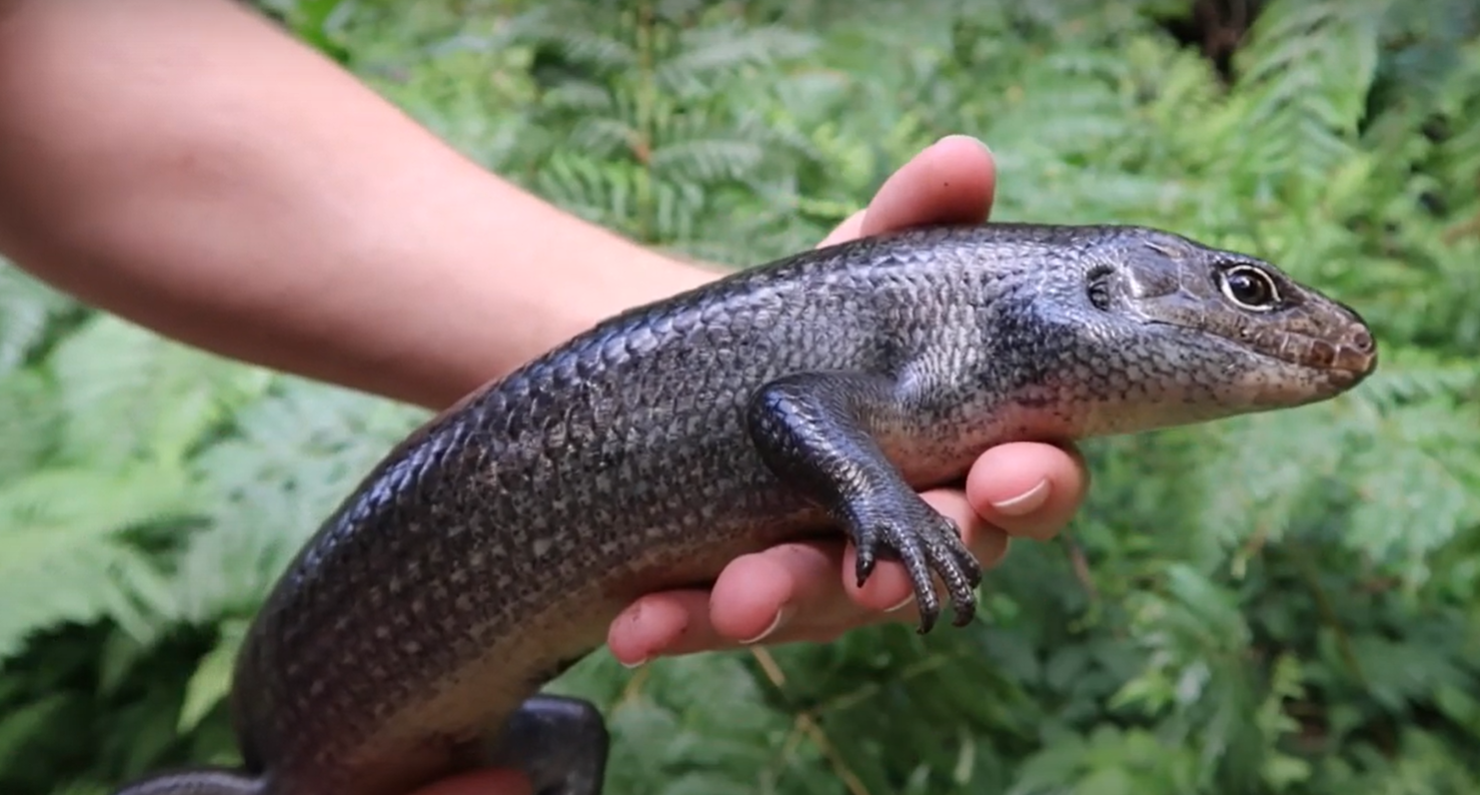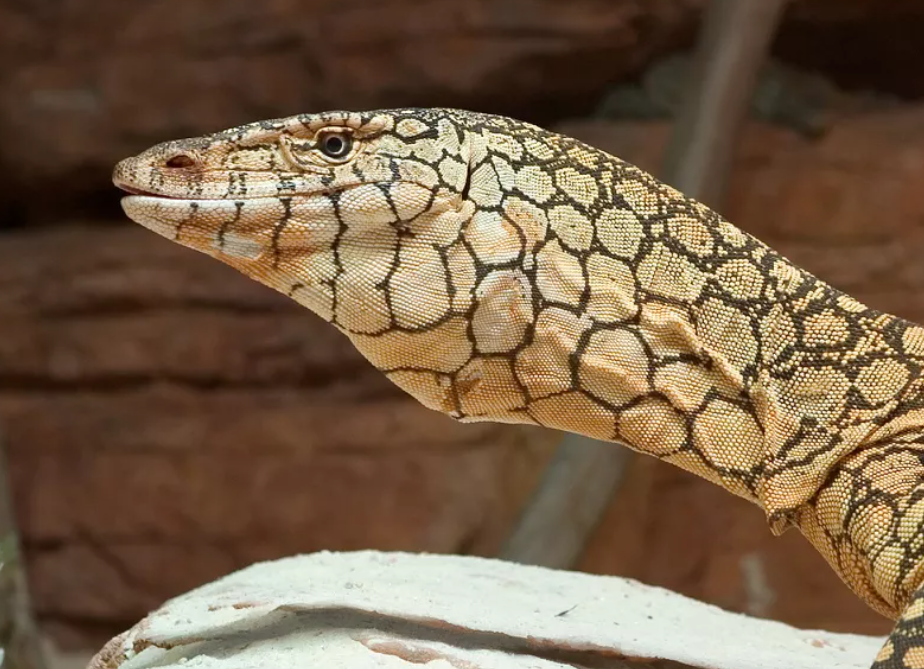GEOGRAPHIC EXTREMES SOCIETY
AUSTRALIAN RECORDS
Reptiles
The Australian continent and surrounding islands have become renowned as a reptile hotspot. Why has this come to be? One clue to this plethora of reptiles lies in the multitude of islands strewn across the many archipelagos. From the tip of the Malay Peninsula, to beyond New Zealand, there are an incredible amount of reptile dominating islands and habitats. The survival of organisms on islands tends to favour animals which have a slower metabolism, which helps them to endure the temporary disasters which commit other species to extinction. Reptiles on islands have proved to be far superior at this compared to mammals. Let’s look at the largest of these island species and compare them to Australia.
Lizards
In Australia, lizards are broken up into five different groups, legless lizards, geckos, skinks, dragons and monitors. There are many more families found world-wide but Australia has some of the more notable and unusual.
Largest Geckos
The ring-tailed geckos of Far North Queensland have a nose to vent length of 160 millimetres, the longest of all the Australian gecko species. Still, the Centralian knob-tailed gecko would probably be Australia’s heaviest. Leach’s giant gecko dwarfs both of these in nearby New Caledonia. A species which still survives in the island’s truly primeval Gondwanan forests. This gecko is the size of a blue-tongued lizard and conforms to Foster’s Rule where some animals on islands grow to huge proportions.

Centralian knob-tailed Gecko. Largest gecko in Australia. Image: Tokays
Largest Skinks
To the north of New Caledonia in the Solomon Islands, Foster’s Rule can be applied to explain the world’s largest skink, the giant Solomon’s skink. This lizard has evolved complex social interactions and has tight family bonds, something rarely seen in the reptile kingdom. The largest Australian skink is the land mullet, which inhabits rainforests on our east coast. This 600-millimetre skink has often startled people due to it resembling a snake skulking in the undergrowth.

Land mullet. Australia’s largest skink. Image: Coops reptiles
Goanna / Monitor lizards
The world’s largest lizard is the Komodo Dragon, an immense goanna, found just to the north of the continent. In Australia, the largest goanna is the desert-dwelling perentie, with the longest specimens measuring 2.5 metres.

Perentie. Australia’s largest monitor lizard. Image: Sydney zoo
Largest Snakes
The largest snake in Australia is the amethyst python from Far North Queensland and Cape York Peninsula. Unreliable records of amethyst pythons reaching over eight metres abound, yet few authentic records exist of specimens reaching over six metres. The olive python from the Top End in the Northern Territory also has some extremely large individuals, and authenticated specimen of over 6 metres is known. Overall, the longest snake in the world is universally acclaimed to be the reticulated python from South-East Asia and the Indonesian Archipelago. It is the only snake to exceed six metres in length regularly but finding a seven-metre specimen has proved challenging, even though there have been hundreds of unsubstantiated reports

Scrub or Amethystine python. Largest Australian snake. Image. Wujal Wujal police
Largest sea Turtles
The largest of Australia’s sea turtles is the leatherback turtle. This species dwarfs all other sea turtles on the planet. Leatherback turtles can weigh up to 700 kilograms and are specialised jellyfish feeders, which these days has led to the demise of the species due to accidental ingestion of floating plastic bags. Their ocean-wide migration patterns see their movements determined by the presence of large jellyfish blooms. They can dive to over 1,000 metres – only beaked and sperm whales dive deeper – and they have an amazing swim speed of a reported thirty-five kilometres per hour.

Leatherback Turtle. Largest sea turtle species. Image: Wired
Largest Freshwater turtle
The freshwater turtle’s largest representative in Australia is the pig-nosed turtle endemic to Australia and New Guinea. These unique turtles are restricted to the rivers of the Northern Territory’s Top End, where they can attain a shell length of over 700 millimetres.

Pig-nosed turtle. Largest Australian freshwater turtle. Image: Turtle conservancy
Reptile Records
GES Record: Longest Gecko in Australia – Ring-tailed Gecko. Cyrtodactylus louisiadensis 160mm svl (Source: Wilson and Swan 2003)
GES Record: Largest Gecko in Australia – Centralian knob-tailed gecko Nephrurus amyae. More than 50 grams (Source: Geckojosh. Aust reptile forum)
GES Record: Largest Skink in Australia. Land mullet Egernia major 300 mm svl (Source: Wilson and Swan 2003)
GES Record: Largest Monitor in Australia. Perentie. Varanus eremius 2.4 metres tl (Source: Wilson and Swan 2003)
GES Record: Largest sea turtle in Australia. Leatherback Turtle. (Source: Wilson and Swan 2003)
GES Record: Largest freshwater turtle in Australia (Source: Wilson and Swan 2003)
GES Record: Largest snake in Australia. Amethystine python. Morelia amethystina. 5 metres with unsubstantiated reports of up to 6 metres. (Source: Wilson and Swan 2003)
GES Record: Largest crocodile in Australia. Saltwater Crocodile. Crocodylus porosus. Up to 6 metres (Source: Wilson and Swan 2003)
The Geographic Extremes Society welcomes any input as to the veracity of these records and we encourage everyone to contribute to these extreme records by contacting us to initiate the discussion
